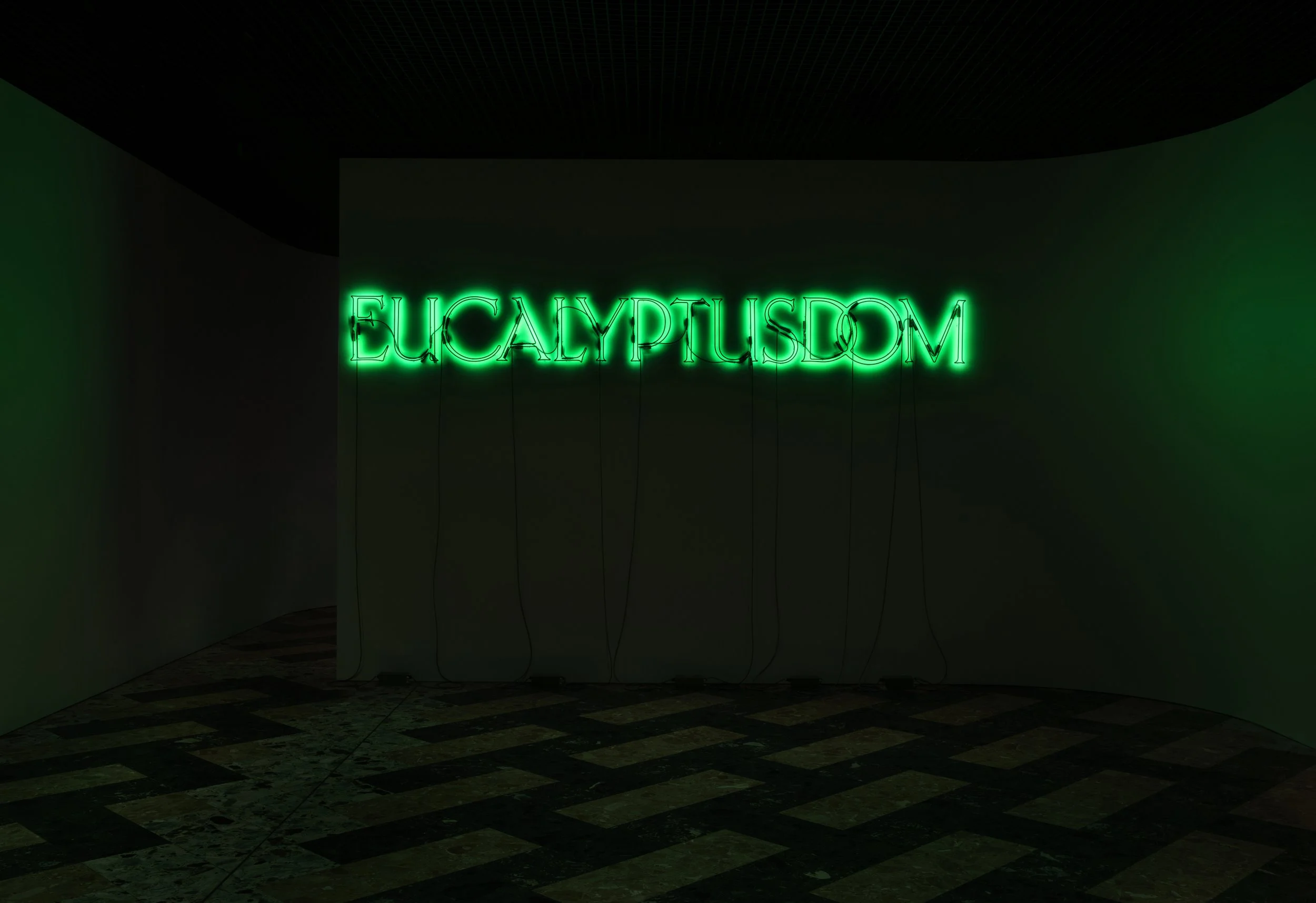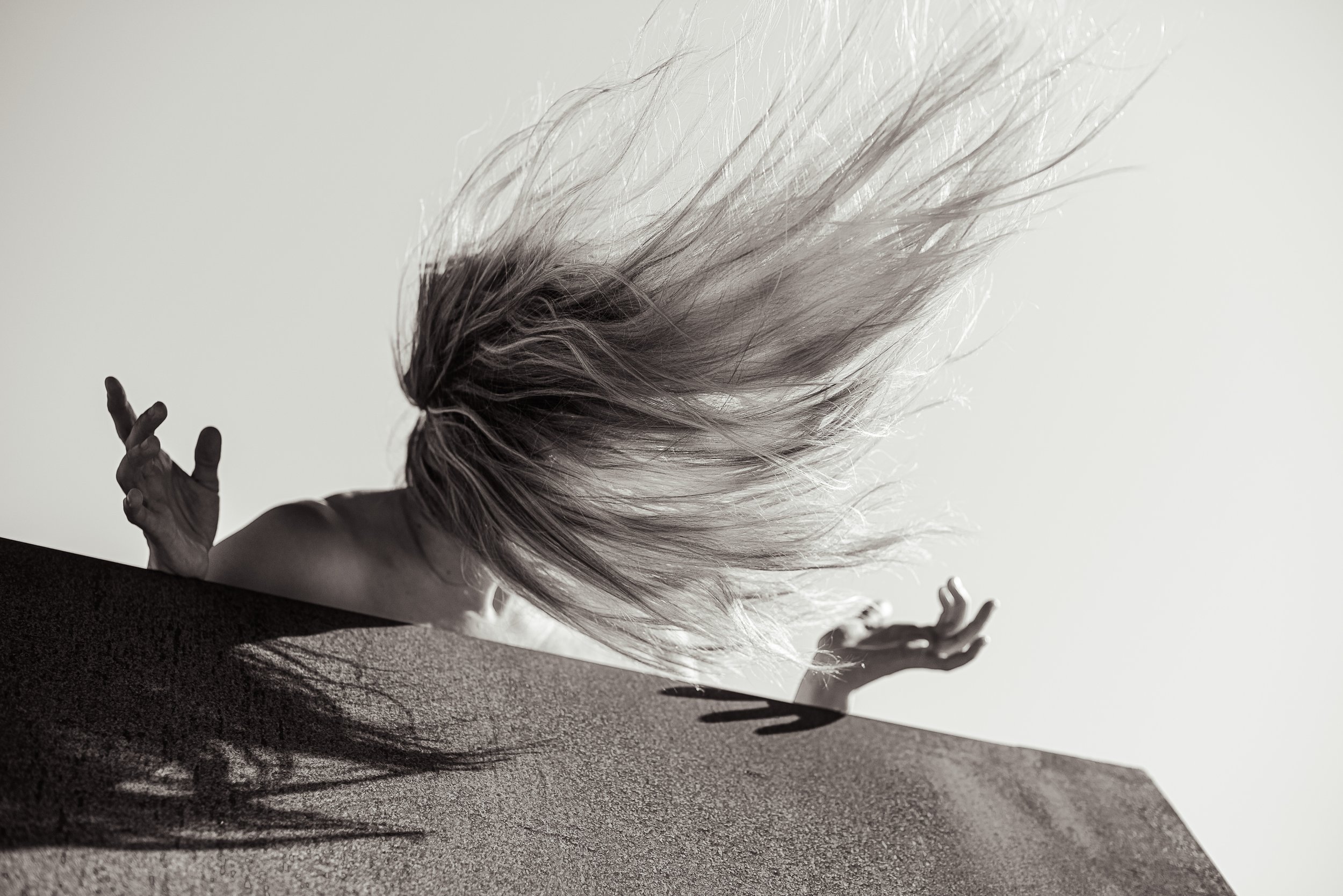Composing
Spectre: Three attempts to summon her (2023)
This piece was composed for Lamorna Nightingale and is composed for Kaija Saariaho, in memoriam.
The title may bring to mind Saariaho’s association with the French Spectralists, but it is really a reference to an imagined apparition. This piece is intended as a gentle ritual, undertaken to lovingly conjure Saariaho’s ghost (whatever that might mean).
A theme that recurs throughout Saariaho’s oeuvre is the way that memory and longing are full of distortion and fragmentation. In filling my own piece with distorted and bleached out fragments of Saariaho’s language, I am, likewise, trying to capture my memory of her.
The most present object from Saariaho’s music is a multiphonic from Noanoa, recorded for me by Lamorna. In the first attempt to summon Saariaho, that multiphonic is transformed and distorted and the live flute part is largely intended to gently refract and colour the harmonic terrain implied by the multiphonic, while doing not very much at all. In the second attempt, Lamorna whispers a recitation of Guillaume Apollinaire’s Il pleut, which was set by Saariaho in 1986. This poem is itself about memory and women’s voices. In the third attempt, Noanoa’s multiphonic is repeated like a refrain or a mantra of some kind, with the thought that repetition might render it a lure; her ghost might recognize something essentially hers tolling in the music, and be beckoned by it.
I’d never thought much about ghosts before.
It’s raining women’s voices as if they had died even in memory
it’s raining you, too, marvellous encounters of my life o little drops
and those rearing clouds begin to neigh a whole universe of auricular cities
listen as it rains while regret and disdain weep to an ancient music
listen to the bonds fall which hold you above and below
by Guillaume Apollinaire, translated by the composer
Spectre: three attempts to summon her was commissioned by Ensemble Offspring with the generous support of Kim Williams AM.
I am a tree, I am a mouth (2022)
The album’s vocal duets draw their lyrics from Rainer Maria Rilke’s stunning and timeless Book of Hours, a work of ardent odes to the ineffable, first published in 1905. The songs’ palette consists of two voices and a rich array of drones constructed from gong resonances, electronically stretched, slowed, and sculpted into an ever-active texture gently turning beneath the interwoven voices.
Composed by Jane, the art songs of I am a tree, I am a mouth owe their language as much to Maryanne Amacher and drone music as to lieder and Hildegard von Bingen.
I am a tree, I am a mouth is available on all digital platforms and streaming services.
For an interview about the album on ABC Radio National, click here.
Eucalyptus Wind Rose (2021)
Composed for the Eucalyptusdom exhibition at Sydney’s Powerhouse, this sound installation was created with a view to making the space as alive as possible, acknowledging that where the Powerhouse now stands eucalypts must once have grown. This work is an effort to reanimate that forest.
Eucalyptus Wind Rose derives its structure from two aspects of eucalyptus forests: first, the interwovenness of these trees with our own bodies, the essential exchange we have with forests in the form of our breath; and second, the flourishing of intense colour when the trees are in bloom. As such, the work consists of two distinct layers of sound: the first is an ambient environmental texture of breath, field recordings, and textural sound sourced from wood and paper; and the second is a garden of sonic ‘blossoms,’ responsive (via motion sensors) to the movement of visitors through the exhibition.
The textural layer is relatively austere in its absence of pitch and moves through the space, aerating it, animating it, like a breeze through a forest. The garden, in contrast, contains 28 unique pitch clusters, or ‘blossoms’, each constructed from female voice and violin pitches, and each with a fixed location in the exhibition space. As in a natural forest, in some places there is a density of blossoms, while in other zones they are distributed more sparsely.
The specific design of each blossom derives from the data represented in wind roses pertaining to the site.
The exhibition won Best Installation Design at The Australian Interior Design Awards and Best Temporary Design at the World Architecture Festival.
Resources:
For an ABC Radio interview with curators Agatha Gothe-Snape and Sarah Rees, click here.
In Relation is a 6 episode podcast series inspired by the exhibition and hosted by curators Agatha Gothe-Snape and Emily McDaniel. The series is programmed by Rebecca Gallo, produced by Ayeesha Ash and Cara Stewart, edited by Mara Schwerdtfeger, and sound designed by Jane Sheldon. Click here to listen.
Fugue (2021)
When it's time for you to leave, there will be a sign in the sky. All of us witness it. You will feel something like a sudden draft of air. Turn round and face it and you'll see a cloud of white dust pouring out of the sun. You will imagine yourself inside a prism that is vibrating like a gong. You will long to vanish into thin air. - David Rattray
Performance by Sydney Dance Company's Pre-Professional Year 2020 PPY20 Revealed at Carriageworks, Sydney. Choreography: Omer Backley-Astrachan
Music/Sound Design: Jane Sheldon, with text by David Rattray * Musicians: Jane Sheldon (vocals), Kirsty McCahon (double bass) * Sound Engineer: David Kim-Boyle * Mixing and Mastering: Stuart Melvey
Lighting Design: Alexander Berlage
Costume Design: Annie Robinson
The music for this work was a Finalist in the 2021 Art Music Awards for Electro-acoustic/Sound Art Work of the Year.
Fainomenon (2020)
Excerpt from installation sound design for Pori Festival, Finland. Collaboration with Fainomenon Collective (Maria Nurmela, choreographer/dancer; Saara Nurmi, visual artist; Vesa Loikas, photographer/videographer; Jane Sheldon, voice/sound design).
Photo: Vesa Loikas
poem for a dried up river (2019)
“an assured, gripping performance that speaks to Sheldon’s mastery of atmosphere and her vocal precision…” - Limelight Magazine
“riveting” - New York Times
“stirring… like a pathway from the inanimate to the divine…” - Sydney Morning Herald
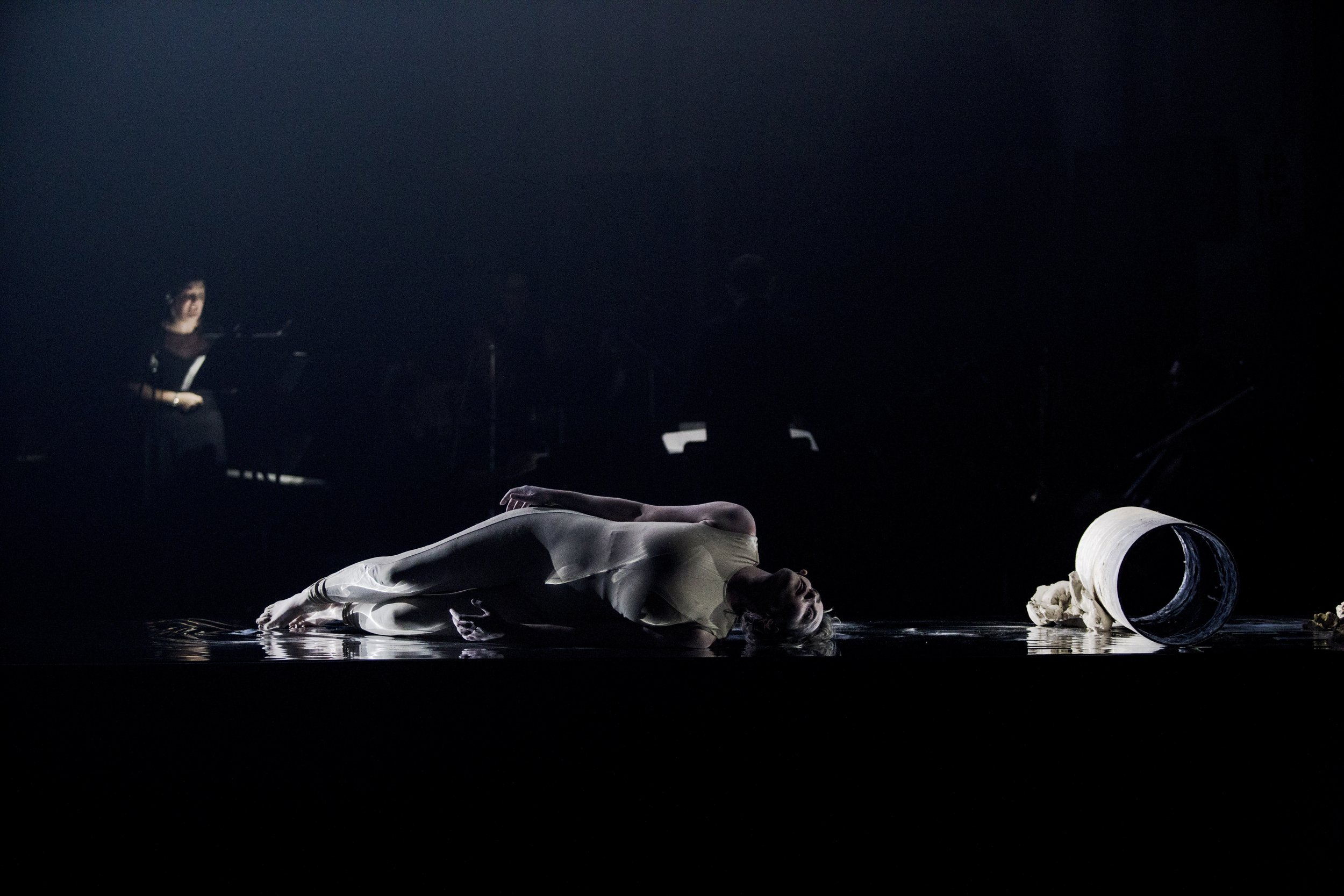
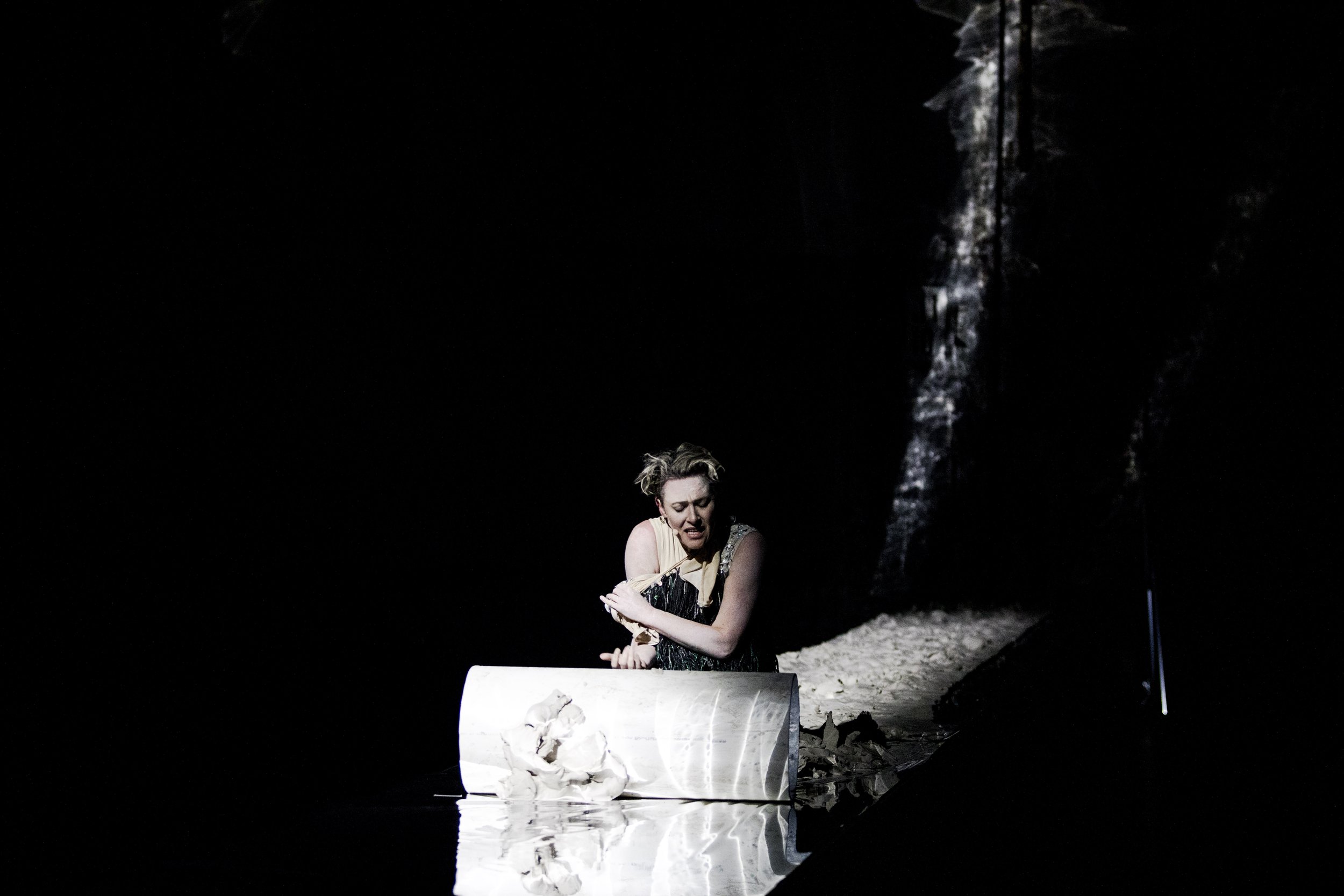
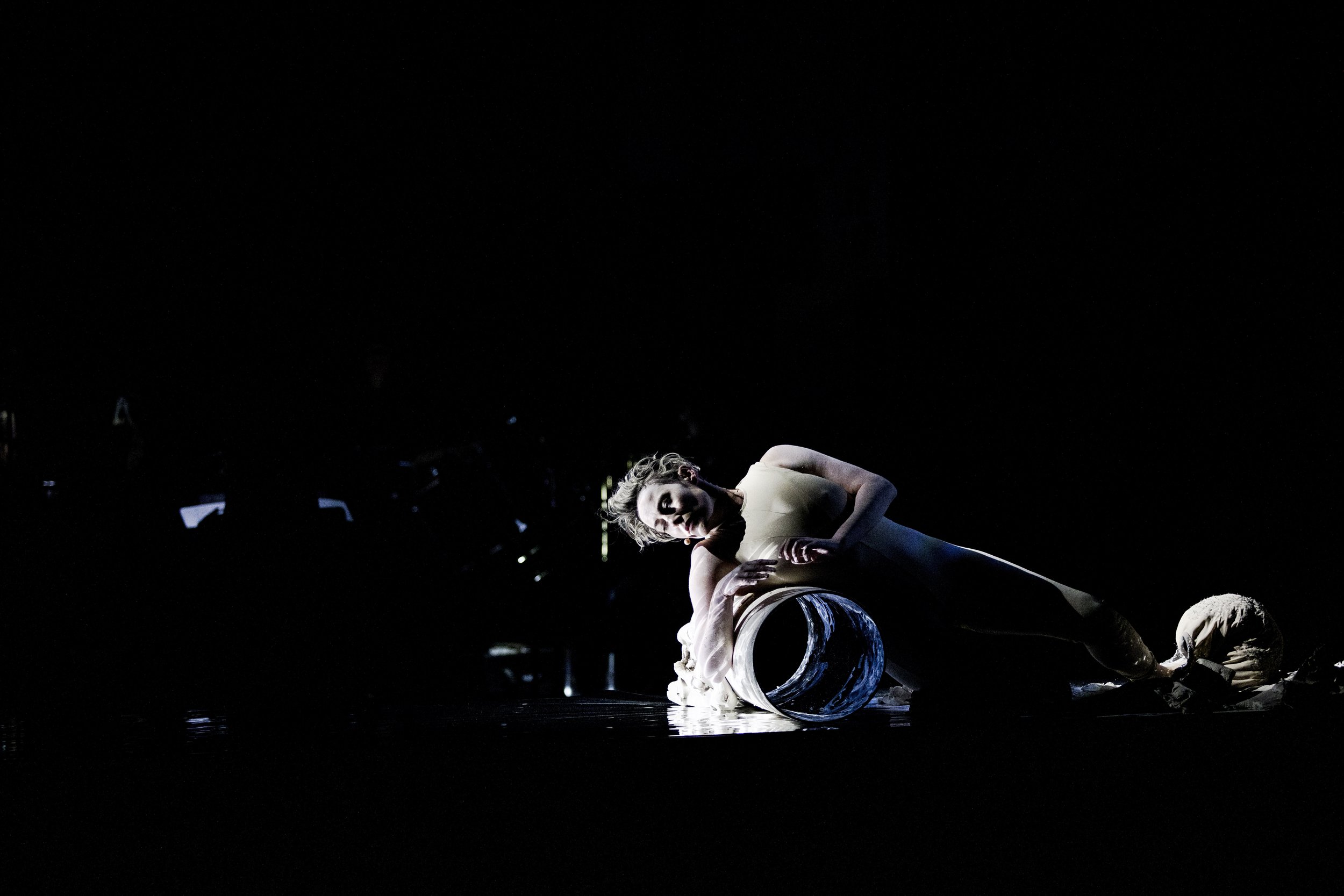
Photos: Lisa Tomasetti
poem for a dried up river is a collaboration with Elizabeth Gadsby. It was awarded Work of the Year: Dramatic at the 2022 Australian Art Music Awards.
Composer: Jane Sheldon —— Text: Alice Oswald —— Designer: Elizabeth Gadsby —— Choreographic consultant: Danielle Micich —— Lighting Design: Alexander Berlage —— Sound design: Benjamin Carey
Click here for the score.
The work has been presented at Sydney Festival by Sydney Chamber Opera, and at New York’s Resonant Bodies Festival.
British poet Alice Oswald wrote the breathless and exquisitely sonic Dunt: a poem for a dried up river after seeing a Roman figurine of a water nymph in a museum. Oswald says of the water nymph figurine: "I admire these extreme ways of invoking rain, just as I admire anyone who dares, by means of metaphor (and all language is rooted in metaphor), to communicate with something that isn’t human. If you’ve paid money for seeds or animals and you want to increase their worth by growing them on, then a water nymph is not some kind of a literary personification of water, nor is it a liquefaction of women, but it’s an effort, driven by absolute need, to make contact with something inscrutable." This piece considers the effort Oswald refers to, and explores the strange puzzle presented when a human culture requires that a small, inanimate figurine of a female form somehow manifests water.
The text is set with the kind permission of the poet.
Australian Premiere: conducted by Jack Symonds —— Sopranos: Jane Sheldon, Anna Fraser —— Trombones/Conch Shell: Matthew Harrison —— Violin: Véronique Serret —— Viola: James Wannan —— Cello: Jack Ward —— Percussion: Claire Edwardes, Bree van Reyk
US Premiere: conducted by Jeffrey Gavett —— Sopranos: Jane Sheldon, Sarah Brailey —— Trombones/Conch Shell: William Lang —— Violin: Adrienne Munden-Dixon —— Viola: Hannah Levinson —— Cello: Julia Henderson —— Percussion: Caitlin Cawley, Jessica Tsang
This project has been assisted by the Australian Government through the Australia Council for the Arts, its arts funding and advisory body.
Earlier works
Three Mouths by Ben Quilty (2020) electronic work. This project was supported through the Australian Music Centre's Peggy Glanville-Hicks Commissioning Initiative. Click here for an essay on the work, published by ADSR.
Transformation (2017) for soprano, violin, cello, clarinet, piano, and percussion. Commissioned by Ensemble Offspring.
Passus duriusculus (2017) for soprano and piano. Created for performance with Zubin Kanga.
Testimony II: Saltair (2017) for piano quartet and electronics. Commissioned by Australia Piano Quartet.

